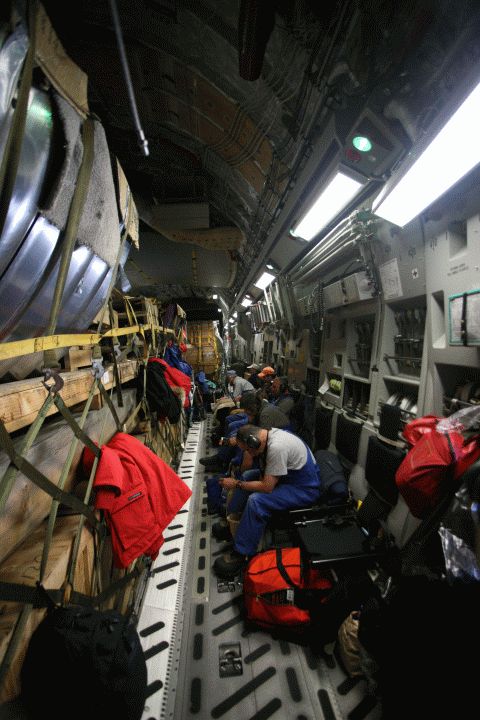I got lucky and was chosen to go to Antarctica to help TA for the NSF's Polar Biology course, which is being taught during January of 2006 at McMurdo Station.
On December 22, I hopped on a plane and headed south for New Zealand. About 24 hours later I arrived in Christchurch and checked into my hotel. An unfortunate side effect of my scheduling to arrive in Antarctica prior to the rest of the class arriving was that I had to spend my Xmas holiday in a hotel in Xchurch. I spent two and a half days traipsing around the city, riding the bus and doing some low-key sight seeing. Monday the 26th was the cold weather gear fitting at the Antarctic Center by the Xchurch airport. We spent about 2 hours going through all the cold weather survival gear that the program provides to each participant. Every piece of clothing gets tried on, and ill-fitting pieces are exchanged for better ones. I finagled a few extra pairs of socks and fleece long-johns for diving purposes, and stuffed my bags until the seams were bursting.
The ice flight from Xchurch to McMurdo was scheduled for early Tuesday morning, the 27th. Bad weather in McMurdo forced a two hour delay of the departure, which meant that I got an extra two hours to sleep in. We showed up at the Antarctic Center at 8:30am to suit up, get our gear stowed, and watch some informational videos. After clearing customs, we boarded a bus and headed over to the airfield. There we were greeted by an Air Force C-17 stuffed to the gills with palletized cargo headed to the South Pole station. There were about 12 passengers on our flight.
Here I am in part of my cold weather gear (including the giant clown-shoe-sized boots) in front of our airplane.

The C-17 flight is only 5 hours, and is really quite comfortable. The cargo area is pressurized and heated to around 60 F, so you can relax and read a book. The flight was as smooth as any commercial airliner.

When we finally began our approach to McMurdo the crew began lowering the cabin temperature and we suited up. The landing proceeded without incident. The C-17 lands at one of the more remote ice landing strips. The landing strip is on top of a few hundred feet of ice, and the C-17 lands using normal wheels rather than skis.
Our trip into the station was in the back of a cramped tracked sno-cat type vehicle, over a chewed up road across the ice. After 45 minutes we reached New Zealand's Scott base, and transfered into a Land Cruiser Troopie for the ride over the hill to McMurdo.
The weather on our arrival in Antarctica was absolutely perfect. No wind, sunny, and a temperature slightly above freezing. After dinner I took a short walk out to Scott's hut on the point near McMurdo. A seal was sitting on the ice just down the hill from me, and far out on the horizon you could see the NSF-chartered Russian ice breaker heading in towards McMurdo. The breaker is still a few miles out and it is actively breaking through the sea ice to get in to the station.

The work in lab so far has consisted of sorting supplies and chemicals in preparation for the arrival of the class in about one week. With six different instructors teaching different topics during the month, the amount and diversity of supplies shipped in for the course is overwhelming.























